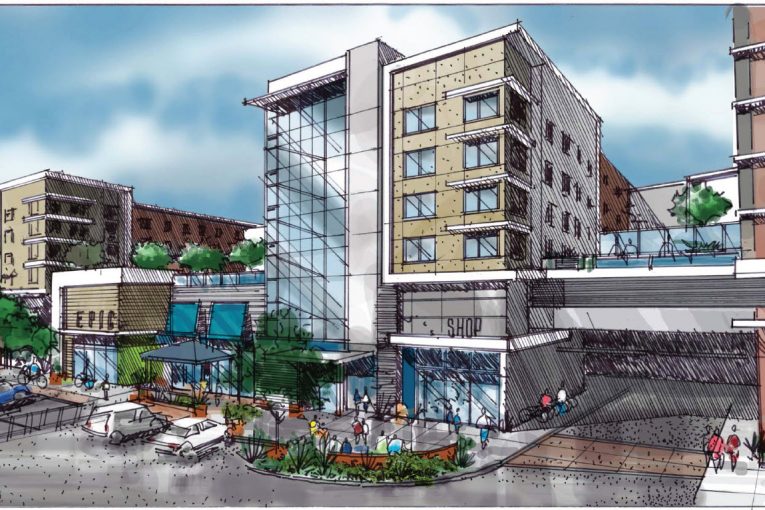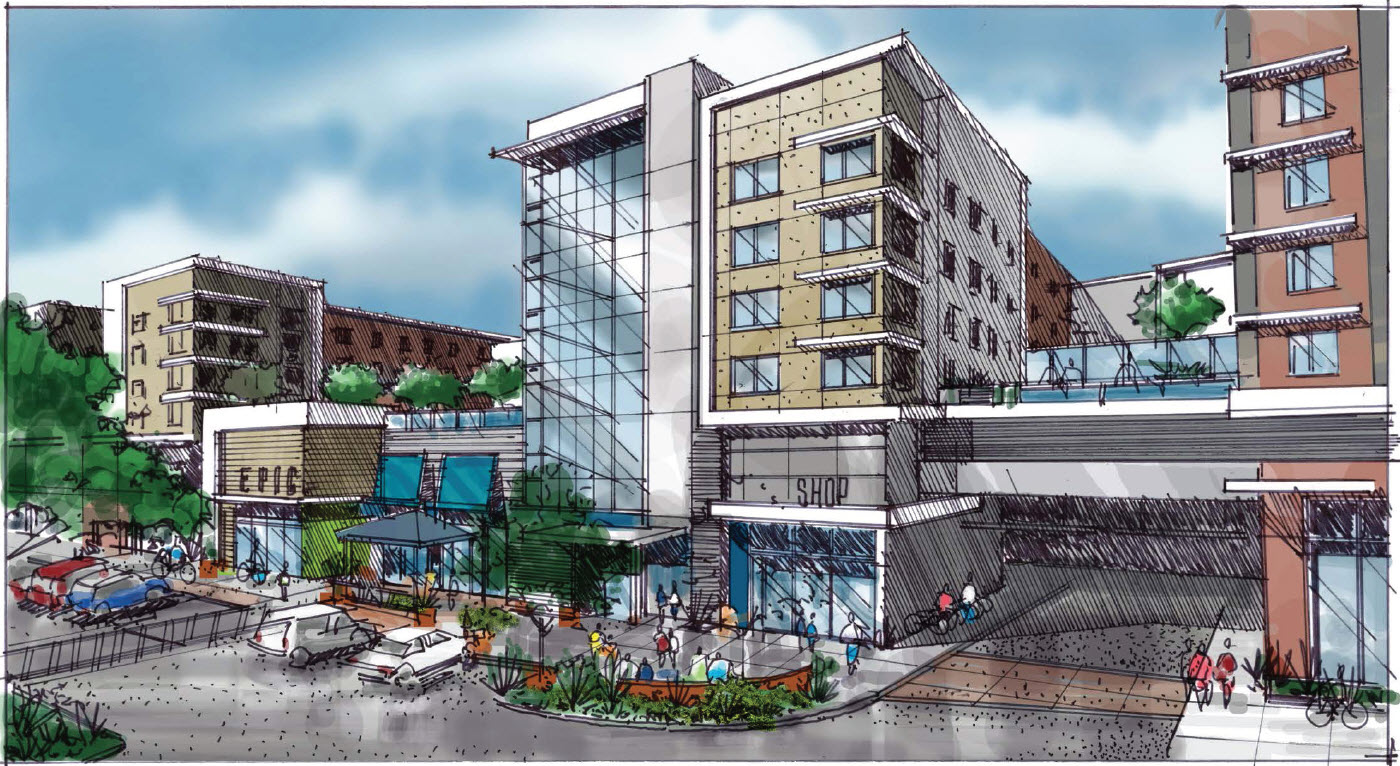

By David M. Greenwald
I appreciate the sentiments of our guest piece from three members of the Social Services Commission (who were writing for themselves) when they pushed for more affordable housing at the University Commons project.
The current proposal is 13 studio units to low-income households and 13 two-bedroom units to moderate income households with the 26 units requiring a total subsidy of $244,296.
The argument from the group is: “While the revisions are more robust than the original proposal, our subcommittee feels that the revised proposal falls short of “commitment to the creation of affordable housing in the city.” In particular, the proposal does not advance our city towards meeting the unmet need of extremely low-income and very low-income families as specified in the Regional Housing Needs Assessment (RHNA).”
Vertical mixed-use has been a problem for the city. Up until 2018, the city’s Affordable Housing Ordinance actually exempted vertical mixed-use from affordable housing requirements.
Staff had continued to recommend that the city outright exempt vertical mixed-use projects from affordable housing requirement. But council was not comfortable with zero.
As Will Arnold put it, it’s a “balancing act.
“Fifteen percent is not feasible,” he said. But then again, “zero percent is unacceptable.”
Councilmember Arnold rightly pointed out that “if the thing doesn’t get built because we’ve put an onerous requirement on there, then no one gets to live there… So that’s the balancing act that we have in front of us.”
Mayor Brett Lee added, “The idea here is that it’s not zero.”
But what is viable?
In 2015, Plescia & Co. found that such housing was “unlikely” based on the estimated return-on-investment.
In 2017-18 Gruen, Gruen & Associates along with Plescia found basically the same thing—except worse.
They wrote: “The two vertical mixed-use prototypes that include combinations of residential and commercial space with covered podium parking have total development costs of approximately $410,000 to $444,000 per unit.”
Worse yet, they warn that the research was conducted in late 2017, and since then “construction costs have increased.” They note that “growth in rents have not kept pace with the rise in construction costs,” therefore, “the returns from development of the prototypes would be likely be lower than those presented in this report.”
Even in a 100 percent market rate scenario—thus no affordable housing at all—they found that the two vertical mixed-use prototypes “are not estimated to support positive land values. In other words, a feasibility gap likely exists for these two 100 percent market rate alternatives.”
That’s the backdrop that we are looking at.
When the applicant originally submitted their proposal the requirement was for them to do exactly zero affordable housing, as it was exempt. The council, however, modified the code to require five percent and the applicant has met that, and now has even exceeded that.
This is the dilemma that we are up against—we lack sufficient amounts of affordable housing in town, we have been slow to build market rate housing that can finance affordable over the past two decades, construction costs have gone up through the roof and subsidies for affordable housing are far less than they once were particularly with the end of redevelopment.
Will Arnold and Brett Lee a few years ago then were correct—zero cannot be the answer, and now the project has created a proposal where the number is not zero. But we have to balance it because the economics of feasibility are tricky and driving up the costs too much means that we get nothing.
Still I think this group did the right thing. As members of the Social Services Commission their job is to advocate for more affordable housing in proposals. They need to keep pushing hard to get as much affordable housing as they can. That is their job.
The council also needs to push for as much as is feasible. It is the job of the city and the applicants to determine what that number actually is. But if they don’t push for more, then we settle for the proposal that is on the table.
There is definitely a tricky element here. We have heard calls for more affordable. We have heard calls for downsizing the project if possible. Those pushes are largely at cross-purposes.
Probably we won’t be able to both downsize and increase affordable—the council is going to need to decide their priority if they support the project at all. If they don’t, then the number of affordable units added to the city will be zero.
—David M. Greenwald reporting


I believe that the reports that David is referring to refer to downtown redevelopment, not a massive, several-acre site.
I also believe that some have criticized those reports, but I am unfamiliar with the specifics.
Bottom line is that even if the current proposal is rejected, the developer/owner isn’t going anywhere, and will likely try again. They’ve already pretty much indicated that. Nor are they going to be able to sell the site easily, since businesses already know that they hope to demolish the mall. (Not exactly a conducive environment, to attract businesses.)
Remember that this proposal started out with NO housing, and was initially intended to only be a refurbishing of the existing commercial mall. As usual, it has now morphed into a housing development (and in this case, another megadorm).
But again, I’d refer to the planning commission, the EIR, and the neighbors regarding the concerns.
And if that was true, that was a foolish idea. The best use of that property is at a mixed use project that serves the residential and retail needs of the student population primarily.
We really have no idea what their initial thinking was, it never got into the planning stage and they never attempted to see if it would pencil out. For all we know it might have been very limited. They became convinced pretty quickly that this was the only viable path forward.
We do know what their initial thinking was, as stated in the Enterprise article (see 9:11 a.m. comment, below).
Seems to be a repetitive pattern of city staff involvement, in which commercial proposals morph into residential proposals. To which, I suspect, developers are more than welcoming of.
This is from the November 27, 2018 staff report. (Link)
Page 22: “The analysis indicates that the two 100 percent market rate vertical mixed-use prototypes (the Downtown Core Mixed-Use and Large Urban Mixed-Use) are unlikely to be feasible.”
Prototype R5 – Large Urban Mixed-Use:
This prototype includes 210 units in a 5-story building, with four floors of apartment units above ground floor parking (podium) and 10,000 square feet of ground-floor commercial space on a 3.0 acre site. The overall housing density is 70 units per acre and the floor area ratio approximates 2.3. The prototype is assumed to predominately include two- and three-bedroom units oriented to family and workforce households, with an average unit size of about 1,100 square feet.
https://www.davisenterprise.com/local-news/planning-commission-unanimously-opposes-university-mall-redevelopment-plan/
Regarding Affordable housing, perhaps the most concerning aspect is this conclusion (from yesterday’s article):
https://davisvanguard.org/2020/08/guest-commentary-university-mall-needs-more-affordable-housing/#comment-432889
As a side note, it appears that a local housing developer has gotten a hold of the former Davis Health Care Center (convalescent facility) on Pole Line Road. Gee, I wonder what he’ll do with it?
Who?
Fouts.
There’s a brief mention of this in the Enterprise (from some time ago), but I can’t access it at the moment. I searched for it online, after noticing some activity at the site a couple days ago.
I’d still like to know why he hasn’t proceeded with Chiles Ranch (about 100 infill homes).
That’s been the case for quite a while (years?).
Yes – a decade or so, in regard to Chiles Ranch.
In regard to the convalescent facility, is anyone surprised that it would also likely morph into a housing proposal?
If you even have to ask, the answer is “yes” – regarding any given business site morphing into a housing proposal (or semi-housing proposal).
But, it does seem strange that Chiles Ranch hasn’t proceeded. You’d think that a blog with an intense interest (and outright advocacy) regarding residential developments might check into that.
“Bottom line is that even if the current proposal is rejected, the developer/owner isn’t going anywhere, and will likely try again.”
That was the exact argument someone named Mark something made to me about Covell Village. Fourteen years later no second proposal has come forward.
Apples-to-Guavas comparison.
I’m hoping that Covell Village never comes forward, again.
By the way, there’s nothing to prevent a developer from gaining entitlements, and then selling a site.
David, are you aware that neither the 2015 Plescia report nor the 2017-18 Gruen+Gruen/Plescia report were publicly vetted. There was no public discussion of either of those two reports. The 2015 Plescia report was briefly touched on as a limited part of the FBC deliberations on MRIC, but that discussion was truncated when MRIC withdrew their application. There was no discussion of the report as part of Nishi because the first Nishi project had no affordable housing component. City Council has never agendized a public discussion of the report’s findings.
Regarding the 2017-2018 report, you may want to check to see whether any member of the public access the report on the City website? If you find a link, please publish it.
Like the 2015 report City Council has never agendized a public discussion of the 2017-2018 report’s findings.
You may also want to talk to the Social Services Commission about their thoughts about the 2017-2018 report.